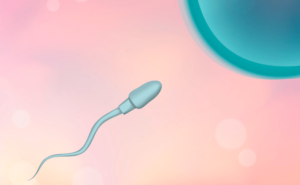Introduction
‘Do I always have to wear a seatbelt when I’m pregnant?’
‘I’m worried that the seatbelt will put pressure on my stomach.’
Do you have any of these worries? Even if you know that wearing a seatbelt is compulsory to save your life, many people are still unsure what to do during pregnancy.
It is still fine when the belly is small, but when you are in the last month of pregnancy, it can be quite difficult to wear a seatbelt on a big belly. However, if you have to drive for work, you may not be able to avoid driving at all.
In this article, we will look in detail at whether it is necessary to always wear a seatbelt during pregnancy and how to do so without putting pressure on your belly.
How long can I drive while pregnant?
‘When and for how long can I drive while pregnant?’ Many people may be wondering. In fact, there is no law against driving during pregnancy, so driving from the beginning to the end of pregnancy itself is not a problem.
However, please note that just because there is no problem does not mean you can drive without worrying about anything. This is because you never know what kind of problems may occur at any time during pregnancy.
Driving precautions in early pregnancy
In the early stages of pregnancy, the belly is not as protruding, so wearing a seatbelt may not be a particular problem. However, it is important to be aware of morning sickness, which many people experience in the early stages of pregnancy.
Morning sickness can include vomiting and drooling, but if you have sleeping sickness, try not to accidentally fall asleep at the wheel. If you are too sleepy, ask someone else to drive or take a taxi.
Even if you do not have sleeping sickness, you may experience sudden drowsiness or dizziness during pregnancy due to changes in hormonal balance. A slight error in judgement while driving can be fatal, so if you are even slightly concerned about your health, avoid driving by yourself.

NIPT can be performed from early pregnancy
‘I’m worried that my baby might have a congenital abnormality, is there any way to find out at an early stage?’ Are you worried that your baby has a congenital abnormality? One method of testing for genetic disorders in the foetus is called NIPT , which uses the blood of the pregnant woman. It does not involve the extraction of amniotic fluid and is known to have a low risk of miscarriage.
It can determine the risk of Down’s syndrome, as well as Edwards syndrome and Patau syndrome. The test is suitable for those who want to know about the health of the foetus as soon as the pregnancy is confirmed by an ultrasound scan.
Hiro Clinic NIPT has performed more than 60,000 NIPTs. Test results are delivered in as little as two days with the express delivery option. In addition to testing at 10 directly managed clinics from Sapporo to Hakata, NIPT is available at 67 partner medical institutions nationwide, so please contact us if you are interested.
Driving precautions in mid-pregnancy
In mid-pregnancy, the belly becomes more prominent. This is the time when you start to worry about wearing a seatbelt, saying that your stomach is in pain and that you are worried about pressure. This is the time when morning sickness settles down and your physical condition becomes more stable, but do not overdo it.
If you start to feel any inconvenience, such as difficulty seeing your feet or getting in and out of the car, it is safe to refrain from driving as much as possible. If you must drive yourself, drive with extreme caution.
Driving precautions in late pregnancy
In the last trimester of pregnancy, many of you may have a very protruding belly. In the last month of pregnancy, some may find that their stomachs get stuck in the steering wheel. If you have a large belly and cannot steer properly, do not force yourself to drive and always ask someone to give you a lift or take a taxi. You may not be able to steer as well as you would like, which could cause an accident.
Also, wearing a seatbelt may feel oppressive and painful. Make it easier to drive by adjusting the position of the seatbelt to avoid pressure or making sure the seatbelt is not too tight. Shoulder belts should not be worn around the neck and waist belts should be worn away from the bulge of the stomach.
The waist belt should be worn as low as possible to avoid pressure and make it feel more comfortable. However, driving in late pregnancy is generally not recommended from a safety point of view. If you feel, even slightly, that you are ‘pushing yourself too hard’, avoid driving yourself as much as possible.
What to look out for when driving a car during pregnancy
During pregnancy, you have to spend time protecting your life as well as the life of your baby. The Road Traffic Act also stipulates that
Motor vehicles (excluding large two-wheeled motor cycles and ordinary two-wheeled motor cycles. Hereinafter the same shall apply in this Article). (2) Drivers of motor vehicles (excluding large two-wheeled motor cycles and standard two-wheeled motor cycles) shall not operate a motor vehicle without wearing seat belts (hereinafter referred to as ‘seat belts’) which are required to be installed in such motor vehicles pursuant to Chapter III of the Road Vehicles Act and orders issued thereunder. The driver of a motor vehicle (hereinafter referred to as a ‘motor vehicle’) shall not operate a motor vehicle without wearing a seat belt (hereinafter referred to as a ‘seat belt’), which is required to be installed in the vehicle in accordance with Chapter III of the Road Vehicles Act and orders thereunder.
Cite Road Traffic Act Article 71-3.
However, in special circumstances, such as if you are in labour, your water has broken or you are bleeding, you may be exempted from wearing a seat belt in accordance with Article 26-3-2 of the Road Traffic Law Enforcement Order. Nevertheless, it is basically mandatory to wear seat belts even during pregnancy. Take care to avoid accidents in the event of an accident, and devise ways to drive without strain.
Wearing seat belts during pregnancy
Except in emergencies, wearing a seatbelt is compulsory, even during pregnancy. If you are really struggling with your stomach or are concerned about the pressure, try using an assistance product.
We recommend the maternity seat belt. By lowering the position of the waist belt to the thighs, the pressure on the abdomen can be reduced. This item can reduce pressure by simply attaching it to the seat and securing the waist belt with the maternity seat belt. It can be used as soon as it is attached to the seat, making it easy for anyone to handle.

Belongings
During pregnancy, no one can predict what will happen at any time. It is quite possible to go into labour or have sudden abdominal pain while driving. In case the unexpected happens, make sure you have the following items with you when you drive.
- Maternity book
- Driver’s licence
- Health insurance card
The mother and child handbook not only shows which obstetrician and gynaecologist the pregnant woman is attending, but also the health of the baby. Be sure to carry it with you, as you may need to contact your obstetrician if something goes wrong.
You should also have your health insurance card with you, as you may need to seek medical attention.
You should also have a maternity mark. Some municipalities distribute maternity marks for cars. Contact the local authority for information on distribution. You can also buy one yourself as they are generally distributed. It is important to make it clear that you are pregnant when driving, just in case.
Summary
Seatbelts should still be worn during pregnancy. You may find it difficult or painful to wear it as your belly gets bigger, but always drive with your seatbelt fastened. If you find it difficult to drive yourself, take it easy and ask someone to pick you up or take a taxi.
If you must drive, use a maternity seat belt to take the pressure off your stomach to make it easier. Be aware that you need to protect your baby’s life and drive as far as you can without strain.
【References】
- e-Gov legislation search – Road Traffic Act
- Zurich – Do pregnant women need to wear seat belts too? What is the obligation to wear one during pregnancy?
- New and used cars【Nextage】 – Pregnant women must wear seat belts too? Know what to expect when a pregnant woman rides in a car
Article Editorial Supervisor

Dr Hiroshi Oka
NIPT specialist clinic, MD
Graduated from Keio University, School of Medicine
 中文
中文






















